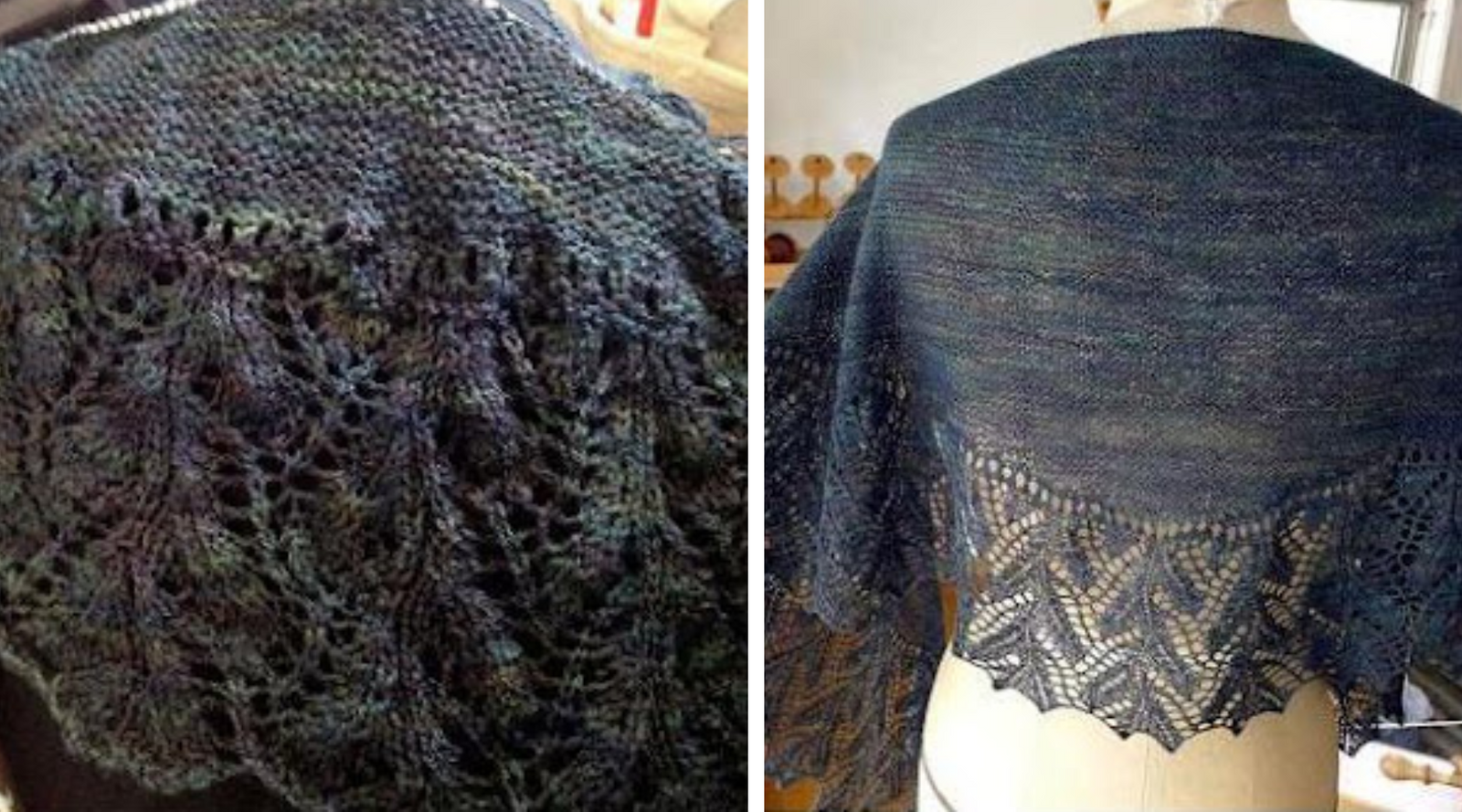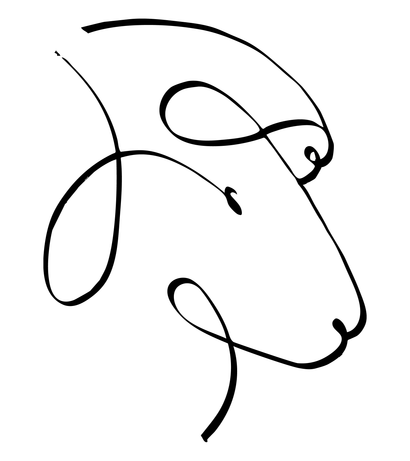Free shipping on all domestic orders over $150
Free shipping on all domestic orders over $150
Shop
Add description, images, menus and links to your mega menu
A column with no settings can be used as a spacer
Link to your collections, sales and even external links
Add up to five columns
Add description, images, menus and links to your mega menu
A column with no settings can be used as a spacer
Link to your collections, sales and even external links
Add up to five columns

What is blocking in knitting?
October 24, 2022 5 min read
What does it mean to block your knitting?
Blocking is an often overlooked, but important step in finishing any garment. Broadly stated, it’s the process of wetting your knit fabric, either with steam or with warm water. Wool is quite relaxed when it’s wet, so you can smooth those pesky curling edges, adjust the size of your fabric, and create a particular shape.
Not only are blocked sweater pieces much easier to seam, they look better. As it dries, your fabric gets softer, your stitches even out, and everything begins to coalesce. The blocking process improves all knit and crochet fabrics.
What are the different methods of blocking?
There are three basic methods of blocking. Wet, steam, and spray
What is Wet blocking?
Wet blocking involves soaking your garment pieces or finished garment in lukewarm water, pinning them into the shape you want, and allowing them to Because knitted fabric (especially wool) is so relaxed and flexible when it’s saturated, you can really change the size and shape of the fabric.
Wet-blocking is the best blocking technique for shawls, lace fabric, and items that you want to stretch open and give the fabric more drape. Although there are exceptions, I never use wet-blocking for sweater pieces, as it is very easy to overstretch them when there are no seams to hold the pieces in place. Be very careful if you are wet-blocking pieces of a sweater or anything that might stretch out of shape and get too large.
What is Steam blocking?
For steam blocking, you pin your garment pieces or finished garment, into the shape and size you want (typically based on your pattern schematic or desired finished measurements) and apply steam to the pieces either with a garment steamer, or by laying wet tea towels on the fabric pieces and holding a hot iron over the towel to steam the knitted fabric below.
Steam blocking is what I use most often because it is fast, and there is no risk of accidentally stretching out your garment pieces before they are seamed. Steam blocking is best on natural fibers as acrylic yarn can melt under the heat of the steam.
What is Spray Blocking?
For spray blocking, you pin your garment pieces or finished garment, into the shape and size you want (typically based on your pattern schematic or desired finished measurements) and spray with lukewarm water until thoroughly saturated. You can also lay the wet tea towels on the fabric and allow the moisture from the towels to dampen the knitted fabric below.
Spray blocking is best for delicate or fragile fabrics that need only a light blocking, or any fabric with metallic fibers, paillettes, or other components that might melt with steam blocking.
What is Dry blocking?
Dry blocking is an interim step you can take to help even up your stitches mid project. It involves stretching the fabric from top to bottom and from side to side to allow the stitches to stretch out and reform themselves. This technique is not a substitute for actual blocking for shawls or garment pieces.
Our sock expert, Jenny May, does a kind of dry blocking with her socks. She doesn't put her completed socks on blockers, or wet them, preferring instead, to let the socks block naturally to your foot as you wear them.
Why is blocking important?
For shawls, especially any lacework at all, blocking is essential to open up the eyelets and get the final shape you want. You can stretch the fabric out to get more drape, enhance a scalloped edge, or put that picot bind-off on full display as you pin the points out dramatically.
For sweaters knit in pieces and seamed, blocking is a crucial step in the finishing process. When we block our sweater pieces, we have a chance to ensure that we have knit the pieces to the correct size and shape. Are the fronts of the cardigan the same size and are they mirror images of one another? Are the sleeves the same length? Is the shoulder shaping angled in the correct direction? Are my sides straight and the same length? Is my sleeve cap bind-off too tight? These are things you want to discover and correct before you seam everything together and wonder why it looks wonky.
Does blocking make your knitting softer?
Blocking isn’t just about changing the shape of your fabric, though. Blocking actually changes the look and feel of your fabric. Think how you feel after a nice hot bath. Pretty nice, right? Yarns are the same. They relax in the water, opening up the fibers and blooming into a softer and more velvety fabric.
Should you block your swatch?
I think you should always block your swatch, because you want to know what the ultimate fabric will look like. some fibers grow a little when you wet them, and it’s best to know this before you decide whether you’re on gauge or not. This is especially true for a shawl. Shawl patterns sometimes neglect to tell knitters whether the shawl’s gauge is before or after blocking, but mostly, the gauge is after. If you’re swatching for a shawl, you may end up using a needle that’s too large, and you might run out of yarn.
What do you need to block your knitting?
-
Something to pin your fabric to
For a long time I used a large bulletin board and several beach towels, so you can certainly do that. I also have a large folding blocking mat that I love, but sadly, it is no longer in production. It was great, and I still use it, but it does have its drawbacks, including the fact that it can’t really accommodate a large shawl.
I have since found Knitters’ Blocks by Cocoknits, which I like very much. The Cocoknits Knitters Blocks are modular, fitting together like large puzzle pieces, so you can arrange them wide and shallow or in whatever shape and configuration you need for your project. I like the textural surface which not only holds the fabric better, it keeps the moisture away from the foam so the blocks don’t get slimy
- Pins
You need pins. A lot of them. I have a large box of standard pins with a ball head, which makes it easier for me to grab them. The don’t really have to be rust-proof, as you’re not going to be leaving them in the garment for more than a day or so. I have never had pins rust.
I’m also a fan of the blockers, which is a comb-like set of pins that make it easier to pin your fabric than just plain pins,
- Optional - Blocking wires.
Blocking wires are optional but handy. Rather than pinning the edges of your fabric, you slide the wires through the selvedge. Then you can easily move the entire edge of your fabric if you want without having to re-place all those individual pins.
Want more? Here's another fun post on 5 reasons to block
If this post was helpful, please feel free to share

